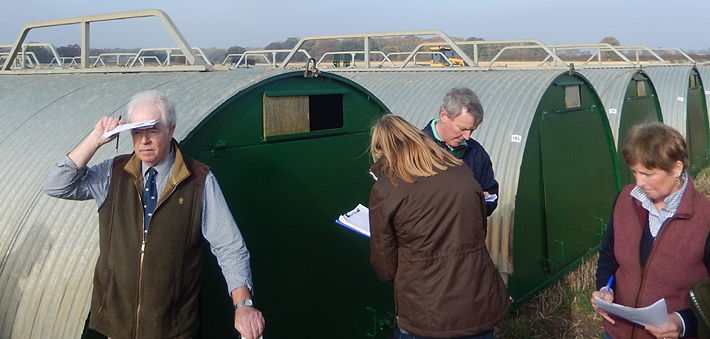Another fairly tough week for UK pig producers with the SPP continuing its decline, dropping another 0.79p to stand at 162.72p.
Weekly contribution prices are generally expected to remain at similar levels on the week, with most quoted between 150p-156p and it will be interesting to see at what level monthly contribution prices are pitched at the start of next month as we enter the crucial autumn pig trading period, when legs are being put down for Christmas and schools (hopefully) return to the classroom, despite the Covid virus continuing to rear its ugly head.
Spot bacon demand has been virtually non-existent, with plenty of pigs about and no need for buyers to pick up their phones and start looking but prices were unlikely to be much more than 150p, except for regulars.
Indications from the EU are of pig prices generally remaining at similar levels with the latest German producer price standing on for the 8th week in succession at 1.47 EUR which is equivalent to 132p in our money, but the SPP is almost 30p higher than the rest of Europe, putting more downward pressure on UK pig prices.
One slim shaft of sunlight has however been an improvement in the cull sow price which for the first time since the spring, has actually headed north rather than south with up to 3p being put on to last week’s quotes and export values are now mainly on the top side of 50p (per kg rather than per pig, in case you wondered!) but still a long way to go to match their value of over 120p in early March.
This upward movement in value is a sign that some of the large EU pig meat processors are starting to get on top of the cull sow backlog caused by Covid restrictions and hopefully this trend will continue.
The value of the Euro has remained virtually unchanged, trading at 89.67p today compared with 89.75p a week ago.
An ongoing lack of pig rearing and finishing space and at the same time some abattoirs imposing very strict limits on the number of pigs producers can send, is also reducing the amount of growing space in the system and keeping a lid on weaner prices which will also be influenced by SPP linked weaner contracts.
The latest AHDB 7kg average is £42.76 but no quote was available for 30kg weaners although these are generally trading in the £55-£60 region, with RSPCA approved weaners continuing to enjoy a significant premium over and above their Red Tractor cousins.
Feed ingredient prices are continuing to creep ahead and although harvesting activities on the eastern side of the country are generally nearing completion, the North and Scotland have been plagued by wet weather, with some wheat crops on the ground turning black rather than being in store with a healthy golden tan.
Spot new crop feed wheat is reported to be trading in the £155/t region on an ex-farm basis and futures feed wheat traded at £172/t for September and feed barley at £138/t for the same month.
Protein values are also continuing to harden, with Hipro soya quoted at £308/t for September but easier for longer months, with May-October 2021 traded at £298/t.
And finally, reports are emerging of the increase in the size and strength of the Russian pig industry where Russian pork prices have increased by 50% since the start of the year as well as stronger home demand. This year total quantities exported are forecast to exceed 100,000 tonnes, with the Russian herd increasing by 40,000 sows this year plus further expansion of an additional 100,000 sows in the pipeline.
Russia also has access to major stocks of cereals for animal consumption and are the largest wheat exporters in the world.
This paves the way for the Russian pig industry to continue to grow and to be a major player in this sector in the years ahead especially if the bamboo curtain parts to allow exports to China.




